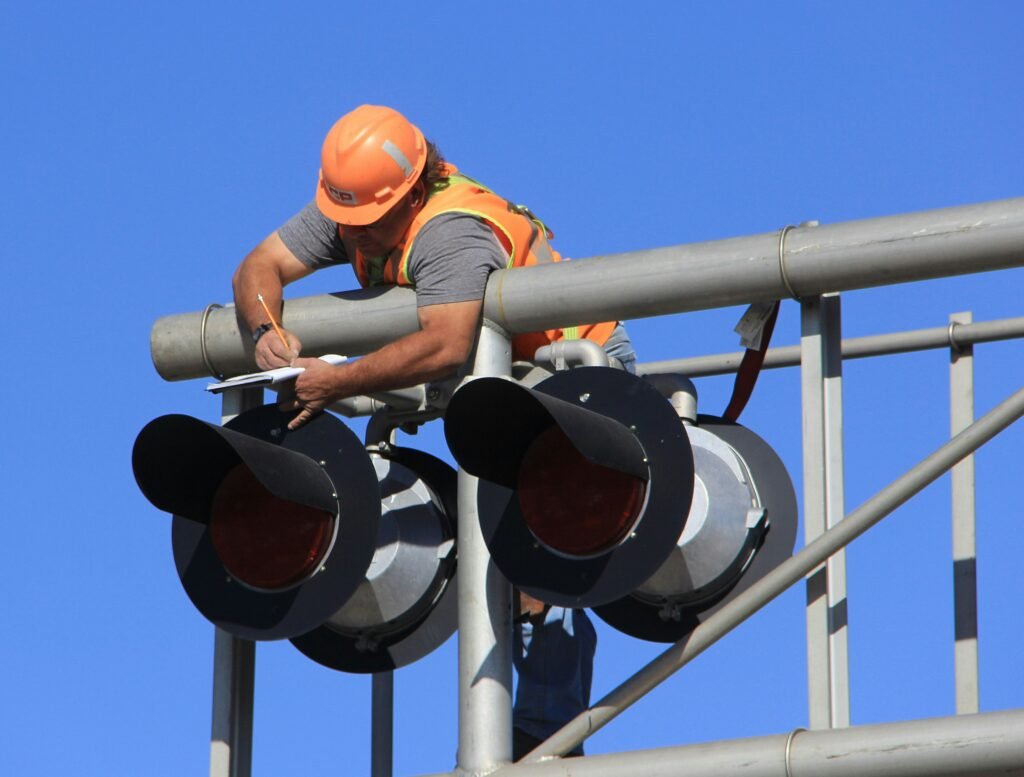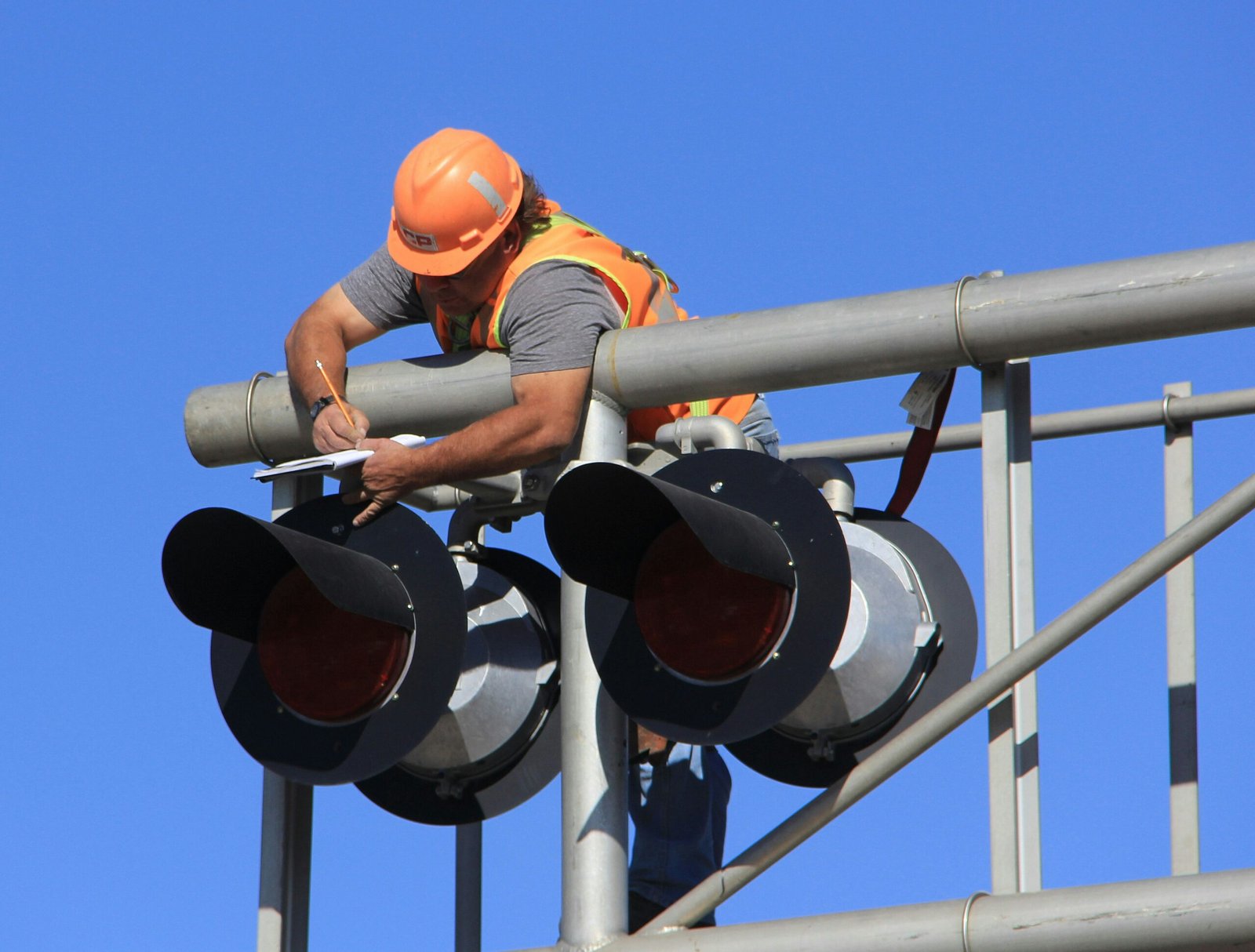Maintaining a regular maintenance schedule for your 18 inch wheels is crucial for ensuring their longevity and optimal performance. In this article, we will explore efficient ways for you to adhere to this schedule, allowing you to save time and money in the long run. By following these simple yet effective tips, you can keep your wheels in top-notch condition, maximizing their lifespan and enhancing your driving experience. So let’s get started on the journey to a well-maintained set of 18 inch wheels!
Importance of Regular Maintenance for 18 Inch Wheels
Regular maintenance for your 18 inch wheels is essential to ensure optimal performance, safety, and longevity. By following a routine maintenance schedule, you can enhance the overall driving experience, improve fuel efficiency, prevent costly repairs, and extend the lifespan of your wheels.
Enhances Performance and Safety
Regular maintenance plays a crucial role in enhancing the performance and safety of your 18 inch wheels. By regularly inspecting and cleaning your wheels, you can identify any signs of damage or wear, such as cracks or bends, that could compromise their structural integrity. Additionally, keeping the wheels clean allows for better brake pad contact, ensuring efficient braking and reducing the risk of accidents.
Improves Fuel Efficiency
Proper maintenance of your 18 inch wheels can also lead to improved fuel efficiency. When your wheels are in good condition and properly aligned, there is less rolling resistance, which means your vehicle requires less energy to move forward. By checking and maintaining the recommended tire pressure, you can also minimize fuel consumption and maximize your mileage.
Increases Lifespan of Wheels
Regular maintenance significantly increases the lifespan of your 18 inch wheels. Through routine inspections, you can detect early signs of damage or wear and address them promptly. This proactive approach prevents minor issues from developing into major problems that could render your wheels unusable. By taking good care of your wheels, you can enjoy their performance and aesthetics for a longer time.
Prevents Costly Repairs
One of the key benefits of regular maintenance is that it helps prevent costly repairs. By inspecting your 18 inch wheels regularly and addressing any issues promptly, you can avoid more extensive damage that may require expensive repairs or even wheel replacement. Regular maintenance saves you both time and money in the long run.
Inspection and Cleaning
To properly maintain your 18 inch wheels, regular inspection and cleaning are essential. By following these steps, you can ensure that your wheels remain in optimal condition.
Visual Inspection
Performing a visual inspection is the first step in identifying any signs of wear or damage. Carefully examine each wheel for cracks, bends, or any abnormalities that may affect its structural integrity. Look for signs of corrosion or rust on the surface, as well as any loose or missing lug nuts. Additionally, check if the wheels are balanced and aligned correctly.
Checking for Wear and Damage
After the visual inspection, it’s crucial to check for wear and damage in more detail. Inspect the tread depth of each tire to ensure it is within the recommended limit. Excessive or uneven wear could indicate alignment issues or improper inflation. Also, look for any bulges or cuts on the sidewalls, as these can compromise the tire’s integrity and lead to blowouts.
Cleaning the Wheels Properly
Regular cleaning of your 18 inch wheels not only enhances their appearance but also helps prevent corrosion and damage. Start by rinsing the wheels with water to remove loose dirt and debris. Then, use a mild wheel cleaner and a soft brush to gently scrub away any stubborn grime. Avoid using harsh chemicals or abrasive tools that can damage the wheel finish. Finally, rinse thoroughly and dry the wheels with a clean microfiber cloth.

This image is property of images.unsplash.com.
Tire Pressure Monitoring
Proper tire pressure is essential for optimal performance, safety, and fuel efficiency. Regularly monitoring and maintaining the recommended tire pressure for your 18 inch wheels is crucial to ensure their longevity.
Understanding the Recommended Pressure
Each vehicle and tire manufacturer provides a specific recommended tire pressure for optimal performance. This information can usually be found in the owner’s manual or on a sticker located inside the driver’s door jamb. It is important to note that the recommended pressure may vary depending on factors such as load and driving conditions.
Checking Tire Pressure Regularly
It is recommended to check the tire pressure at least once a month, or before embarking on a long trip. Use a reliable tire pressure gauge to measure the pressure in each tire. Compare the measured pressure with the recommended pressure, and adjust accordingly. It’s important to check the pressure when the tires are cold, as heat generated from driving can result in inaccurate readings.
Inflating or Deflating when Necessary
If you find that the tire pressure is too low, carefully inflate the tire using an air compressor or at a gas station. Be cautious not to overinflate, as this can lead to reduced traction and increased risk of a blowout. On the other hand, if the pressure is too high, gently release air until it reaches the recommended level. Maintaining the proper tire pressure not only improves safety but also contributes to better fuel efficiency.
Wheel Alignment
Proper wheel alignment is crucial for the optimal performance and longevity of your 18 inch wheels. Regularly inspecting and adjusting the wheel alignment ensures a smooth and safe driving experience.
Knowing the Importance of Wheel Alignment
Wheel alignment refers to the adjustment of the angles at which the wheels make contact with the road. Proper alignment ensures that the tires wear evenly and that the vehicle handles correctly. Improper alignment can cause uneven tire wear, leading to premature tire replacement, reduced fuel efficiency, and compromised handling and stability.
Inspecting and Adjusting Wheel Alignment
Periodically inspecting the wheel alignment of your 18 inch wheels is recommended, especially after hitting potholes or curbs. Look for signs of uneven tire wear, such as feathering or excessive wear on the edges. If you notice any abnormal wear patterns or experience a pulling sensation when driving straight, it’s time to have the wheel alignment checked and adjusted.
Seeking Professional Wheel Alignment Services
While some minor adjustments can be made using DIY methods, it is generally best to seek professional wheel alignment services. An experienced technician will use specialized equipment to accurately measure and adjust the wheel angles to the manufacturer’s specifications. Professional wheel alignment ensures the optimal performance, safety, and lifespan of your 18 inch wheels.

This image is property of images.unsplash.com.
Tire Rotation
Regular tire rotation is an essential part of maintaining the performance and longevity of your 18 inch wheels. By rotating your tires at the recommended intervals, you can achieve more even wear and prolong the life of your tires.
Understanding the Purpose of Tire Rotation
Tire rotation involves moving each tire from one position to another on your vehicle. The purpose of this rotation is to distribute the wear more evenly among all the tires. Since the weight distribution and driving conditions vary from one position to another, rotating the tires helps ensure that they wear at a similar rate. This results in extended tire life and improved traction.
Determining the Recommended Tire Rotation Pattern
The recommended tire rotation pattern for your 18 inch wheels depends on factors such as the vehicle type, tire type, and specific wear patterns. Typically, the rotation pattern involves moving the rear tires to the front and the front tires to the rear, either diagonally or straight across. Consult your vehicle’s owner’s manual or tire manufacturer for the recommended rotation pattern for your specific vehicle.
Following the Recommended Tire Rotation Schedule
To effectively maintain your 18 inch wheels, it’s important to follow the recommended tire rotation schedule. Most manufacturers suggest rotating the tires every 5,000 to 8,000 miles, or every six months, whichever comes first. It’s worth noting that some vehicles with different-sized front and rear tires may have specific rotation requirements. By adhering to the recommended schedule, you can ensure optimal tire performance and extend their lifespan.
Balancing the Wheels
Proper wheel balancing is crucial for a smooth and vibration-free driving experience. Regularly balancing your 18 inch wheels helps prevent premature tire wear, improves traction, and reduces stress on suspension components.
Knowing the Importance of Wheel Balancing
Wheel balancing involves evenly distributing the weight of the wheel and tire assembly. When a wheel is unbalanced, it can cause vibrations that are felt through the steering wheel or the vehicle’s body. These vibrations not only affect the overall driving comfort but can also lead to uneven tire wear and potentially unsafe driving conditions. Proper wheel balancing ensures smooth and efficient operation of your 18 inch wheels.
Identifying Signs of Unbalanced Wheels
If you experience vibrations while driving, especially at higher speeds, it may indicate that your 18 inch wheels are unbalanced. Other signs of unbalanced wheels include uneven tire wear, steering wheel oscillation, or shaking. If you notice any of these symptoms, it’s crucial to have your wheels balanced as soon as possible to prevent further damage and ensure a safe driving experience.
Getting the Wheels Professionally Balanced
While it is possible to balance wheels using DIY methods, it is recommended to seek professional wheel balancing services. Skilled technicians use specialized equipment, such as a wheel balancer, to identify the areas of imbalance and add or remove weight as necessary. Professional wheel balancing ensures precision and accuracy that cannot be achieved through basic DIY methods, resulting in a smoother and safer driving experience.

This image is property of images.unsplash.com.
Checking and Replacing Lug Nuts
Properly tightened lug nuts are essential for the secure attachment of your 18 inch wheels to the vehicle’s hubs. Regularly checking and replacing lug nuts as needed helps ensure the wheels remain properly secured, preventing wheel detachment while driving.
Importance of Properly Tightened Lug Nuts
Lug nuts secure the wheels to the vehicle’s hubs, providing the necessary clamping force. If lug nuts are not properly tightened, the wheels can become loose, leading to a dangerous situation while driving. Loose lug nuts can result in wheel wobbling, vibrations, and even wheel detachment, potentially causing accidents and severe damage. Regularly checking and maintaining properly tightened lug nuts is crucial for your safety.
Inspection for Loose or Worn Lug Nuts
As part of your regular maintenance routine, it is important to inspect the lug nuts for any signs of looseness or wear. Using a torque wrench, check if the lug nuts are tightened according to the manufacturer’s specifications. Look for any signs of rust, deformation, or stripped threads on the lug nuts. If you notice any loose or worn lug nuts, it is essential to address the issue immediately.
Replacing Lug Nuts as Needed
If any lug nuts are found to be loose, worn, or damaged beyond repair, it is important to replace them promptly. Use high-quality and manufacturer-approved lug nuts to ensure proper fitment and reliable performance. When replacing lug nuts, torque them according to the manufacturer’s recommended specifications to ensure optimal clamping force and safety.
Regular Wheel Cleaning
Regular cleaning of your 18 inch wheels is not only important for aesthetics but also for protection against environmental factors that can cause damage and corrosion. By following these steps, you can ensure the longevity and overall appearance of your wheels.
Choosing the Right Cleaning Products
When cleaning your 18 inch wheels, it is important to choose the right cleaning products to avoid damaging the wheel finish. Avoid using harsh chemicals or abrasive cleaners that can cause scratches or remove the protective coating. Opt for mild wheel cleaners that are specially formulated for various wheel types, such as chrome, aluminum, or painted wheels.
Cleaning the Wheels Thoroughly
Start by rinsing the wheels with water to remove loose dirt and debris. Apply the chosen wheel cleaner and use a soft brush or sponge to gently scrub the entire surface of each wheel. Pay attention to hard-to-reach areas, such as the spokes and wheel wells, to ensure a thorough cleaning. Rinse the wheels thoroughly to remove any remaining cleaning solution and dry them using a clean microfiber cloth.
Protecting the Wheels from Environmental Factors
After cleaning, consider applying a wheel protectant or wax to create a protective barrier against environmental factors. These products help repel brake dust, road grime, and other contaminants that can cause corrosion or damage to the wheels. Follow the manufacturer’s instructions when applying these products and reapply as needed to maintain the protection.
Dealing with Wheel Damage
Despite regular maintenance and care, wheels can sometimes incur damage. By promptly identifying and addressing different types of wheel damage, you can prevent further deterioration and ensure the safety and performance of your 18 inch wheels.
Identifying Different Types of Wheel Damage
Various types of wheel damage can occur, including scratches, scuffs, chips, bends, or cracks. Scratches and scuffs may result from curb rash or accidental contact with debris, while chips can be caused by road hazards or loose gravel. Bends and cracks can occur due to potholes, collisions, or extreme driving conditions. Regular inspection helps identify these issues early on.
Repairing Minor Wheel Damage
Minor wheel damage, such as scratches and scuffs, can often be repaired using specialized repair kits or services. These kits typically include paint or filler matched to the wheel color, allowing you to fill in the damaged area. Follow the instructions carefully to achieve a seamless and durable repair. In some cases, professional wheel repair services may be necessary for more complex damage.
Replacing Severely Damaged Wheels
In cases of severe damage, such as significant bends or cracks, replacing the affected wheel may be the safest and most cost-effective option. Severely damaged wheels can compromise the structural integrity and safety of your 18 inch wheels, so it is crucial to replace them promptly. Consult with a reputable wheel dealer or professional technician to ensure proper fitment and compatibility with your vehicle.
Proper Storage of Wheels
When your 18 inch wheels are not in use, proper storage is essential to maintain their condition and prevent damage. By following these steps, you can ensure the wheels are well-preserved for future use.
Cleaning and Drying Wheels
Before storing your 18 inch wheels, ensure they are thoroughly cleaned and dried to prevent the accumulation of dirt, debris, or moisture that can lead to corrosion. Use a mild wheel cleaner and a soft brush to clean each wheel, making sure to remove any brake dust, road grime, or tar. Allow the wheels to air dry completely or use a clean microfiber cloth to remove any remaining moisture.
Removing Tires before Storage
To protect the tires and improve storage efficiency, it is recommended to remove them from the wheels before storage. This step helps prevent tire deformation or sidewall cracking that can occur over prolonged periods. Additionally, storing separate wheels and tires allows for easier handling and maintenance.
Storing Wheels in a Cool and Dry Environment
When storing your 18 inch wheels, choose a cool and dry environment that is not exposed to direct sunlight or extreme temperature fluctuations. Avoid storing the wheels in humid locations or places prone to moisture, as this can lead to corrosion. Use wheel storage racks or stands to keep the wheels properly supported and ensure they are not stacked on top of each other, as this can cause damage.
